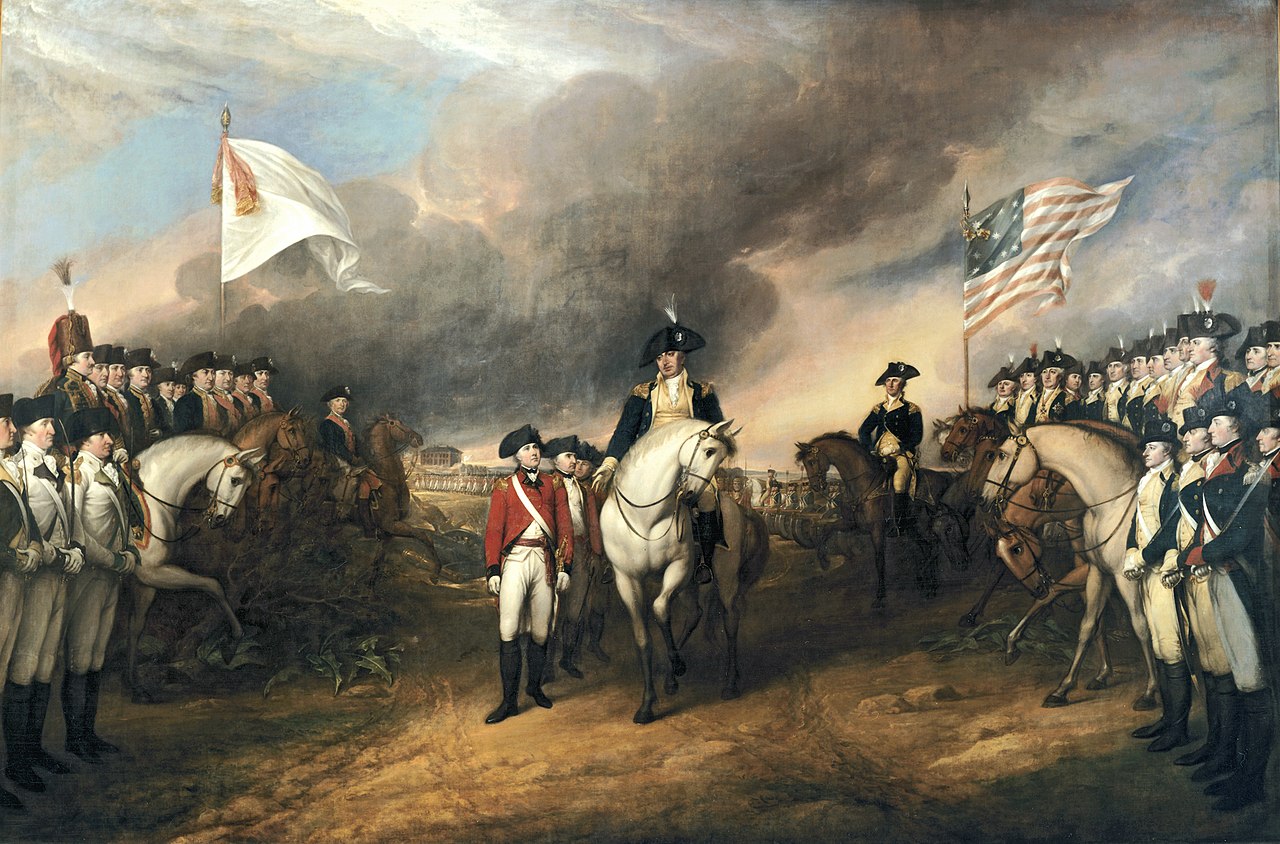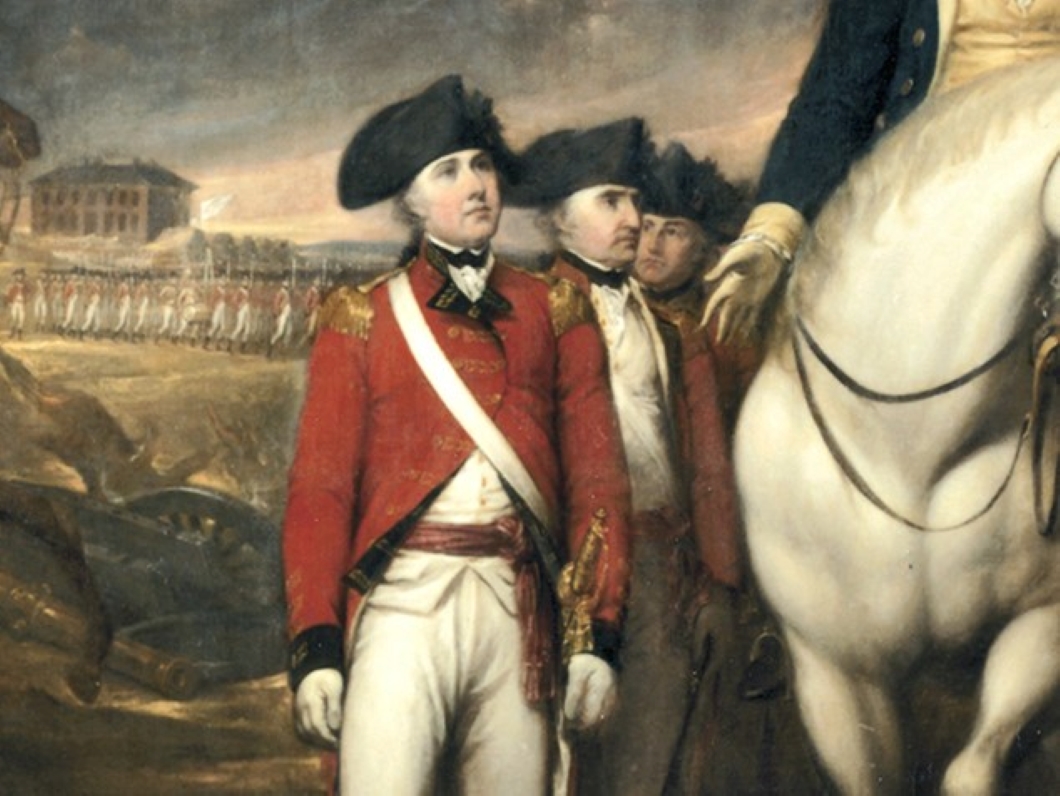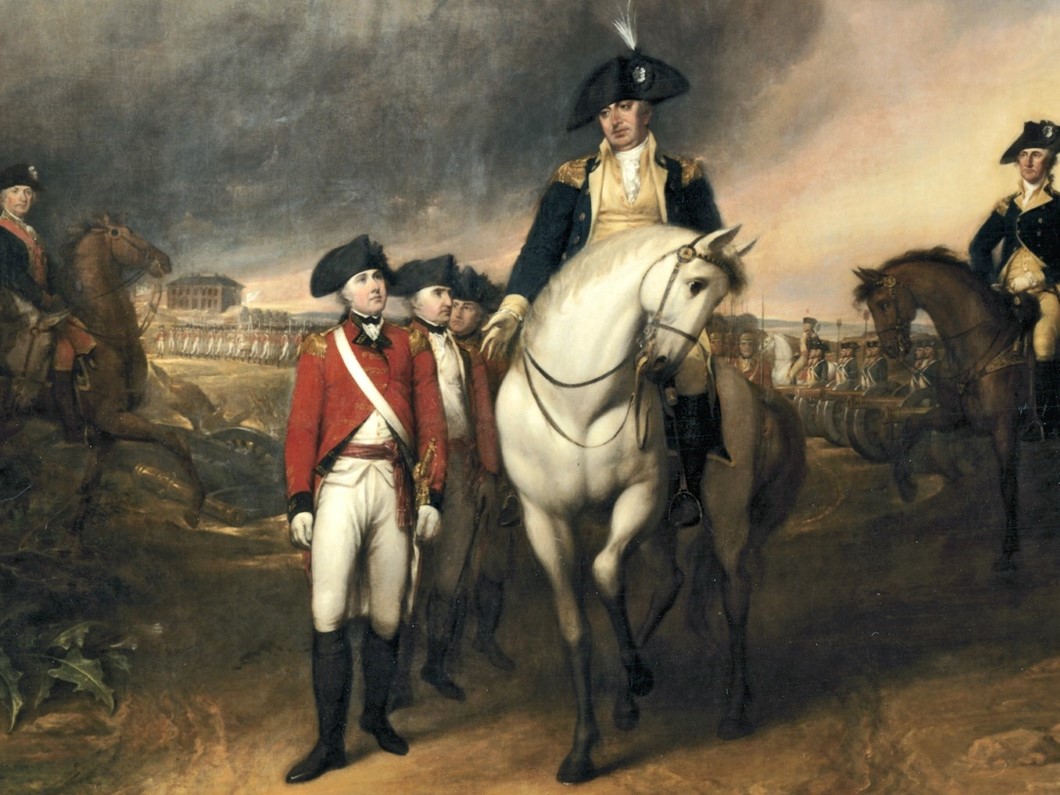
About Andrew Cusack
 Writer, web designer, etc.; born in New York; educated in Argentina, Scotland, and South Africa; now based in London.
Writer, web designer, etc.; born in New York; educated in Argentina, Scotland, and South Africa; now based in London. read more
News
Blogs
Reviews & Periodicals
Arts & Design
World
France
Mitteleuropa
Knickerbockers
Argentina
The Levant
Africa
Cape of Good Hope
Netherlands
Scandinavia
Québec
India
Muscovy
Germany
Academica

The Irishman at Yorktown
General Charles O’Hara and the Surrender of Lord Cornwallis
Today marks two-hundred-and-forty-one years since the British general Lord Cornwallis surrendered to a joint Rebel-French force at Yorktown in Virginia — perhaps the most embarrassing British defeat until the Fall of Singapore to the Japanese more than a century and a half later.
Every American schoolboy, or indeed any visitor to the United States Capitol, is familiar with John Trumbull’s oil painting of the scene at Yorktown.
Somewhat pitifully, Lord Cornwallis pled ill health and did not attend the formal ceremony of surrender.
Instead, he sent his adjutant to act on his behalf: a wily character by the name of General Charles O’Hara.

O’Hara had soldiering in his blood, being the illegitimate son of a Portuguese woman and Field Marshal the Rt Hon James O’Hara, 2nd Baron Tyrawley and 1st Baron Kilmaine. The elder O’Hara was the sometime envoy-extraordinary to the King of Portugal, where he made the acquaintance of the woman who bore him one of at least three of his sons-born-the-other-side-of-the-blanket.
Lord Tyrawley looked after his son, sending him to Westminster School before buying him an army commission and keeping him close by in the Coldstream Guards which the father commanded himself.
Young Charles was at one point sent on assignment to Senegal commanding a corps of African army convicts which, reading between the lines, may have been a punishing demotion.
He soon regained his command with the Guards though and was sent to America where the royal troops were fighting against a surprisingly cohesive force of rebel English colonists.
Despite being surrounded by numerous American loyalists, O’Hara tended to distrust the colonists and viewed them with suspicion, tarring them all with the brush of rebellion openly practiced only by a distinct (but ultimately successful) minority.
He was wounded at the Battle of Guildford Court House in March 1781, and by the Siege of Yorktown had been promoted to Cornwallis’s second-in-command.

It was that fateful day in October 1781 that made then-Lieutenant Colonel O’Hara a central witness to history.
Having been deputed by Cornwallis to surrender to the Franco-American forces, O’Hara went to hand over his sword to the French general, the Comte de Rochambeau.
Conscious of diplomacy, Rochambeau refused the honour of accepting the British surrender and directed O’Hara to General Washington.
Conscious of history, General Washington recalled his colleague General Benjamin Lincoln’s humiliation at having to surrender a large rebel force to General Sir Henry Clinton at the Siege of Charleston. Washington thought it appropriate that General Lincoln receive the British surrender, and directed Lt Col O’Hara to him.
Such was the scene Trumbull captured in oils and which now hangs in the rotunda of the Capitol in the city that bears Washington’s name.
But what happened to the sword? Washington handed it back to the Irishman, who returned it to Cornwallis, whose descendants still keep it to this day. It even made an appearance on an episode of Antiques Roadshow in 2019.
But Yorktown was not the last time Charles O’Hara was a central witness to history. His army career continued and O’Hara was appointed Governor of Gibraltar, where he became known as ‘the Old Cock of the Rock’.
In the midst of the revolutionary turbulence in France, Major General O’Hara was sent to command a British force supporting the royalists at the Siege of Toulon in 1793. This was the engagement where a young Corsican captain named Napoleone Buonaparte successfully organised the French Republican capture of the harbour fortifications. The Corsican upstart would cause much trouble for Europe over the coming decades, and Charles O’Hara was there to witness his entry onto the world stage.
O’Hara seems to have been much admired as a genial Governor of Gibraltar, but despite an unfulfilled engagement to the writer Mary Berry, he never married. He had a child each by two mistresses at the Rock, and when he died there in 1802 he left them £70,000 in trust, while plate and other property valued at over £7,000 went to his loyal black servant, Moyse.
Search
Instagram: @andcusack
Click here for my Instagram photos.Most Recent Posts
- Bicycle Rack April 29, 2024
- Burns Tower April 19, 2024
- Patrick in Parliament March 18, 2024
- Articles of Note: 13 March 2024 March 13, 2024
- Cambridge March 9, 2024
Most Recent Comments
Book Wishlist
Monthly Archives
Categories



Something which goes against the grain of nationalist Irish American diaspora…
I believe the visitor center in Virginia tells a variation of the story.
They maintain that Washington did not receive the surrender, that instead he sent a General Sullivan.